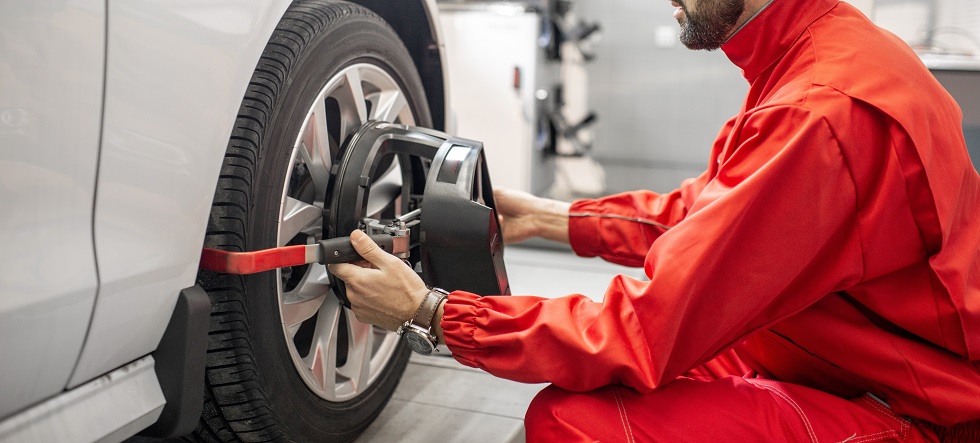All Categories
Featured
When it involves car maintenance, tires are commonly one of the most neglected components, despite the fact that they play an essential duty in the safety and effectiveness of your vehicle. Tire turning and positioning are two essential solutions that assist guarantee your tires use equally, last much longer, and continue to carry out at their ideal. Here's whatever you need to understand about tire turning and placement and why they matter for your car.
What Is Tire Turning? Tire rotation is the process of moving the tires from one position to one more to make sure also put on throughout all 4 tires. The front and back tires of a lorry wear at different rates as a result of the weight distribution and the fact that the front tires take care of both guiding and braking. By rotating the tires consistently, normally every 6,000 to 8,000 miles, you can stabilize out the wear and expand the life of your tires.
In the majority of lorries, the tires will certainly be turned from front to back, and in many cases, side-to-side, relying on the tire kind and your car's requirements. This ensures that each tire births an equal quantity of stress and strain. Regular tire rotations likewise enhance vehicle handling and ride high quality, as well as add to better gas performance.
What Is Tire Positioning? Tire placement refers to changing the angles of your car's wheels to ensure they are located appropriately according to the manufacturer's specifications. Appropriate placement makes certain that your tires are identical to one another and vertical to the ground, which assists enhance the total handling, stability, and lifespan of your tires.
There are 3 key elements of positioning:
Camber: The tilt of the wheels when checked out from the front. If the wheels lean inward or outside, it can create unequal tire wear. Caster: The angle of the guiding axis when viewed from the side. Appropriate caster alignment makes sure stable steering and better lorry control. Toe: The angle at which the tires direct inward or outward when checked out from above. Incorrect toe placement can cause tires to wear erratically and affect dealing with. Misalignment can take place due to aspects like striking holes, aesthetics, or driving over harsh surface, and even routine driving gradually can slowly create misalignment. Getting a positioning check every 1-2 years or when you observe handling issues is important for optimal tire efficiency.
Why Are Tire Turning and Placement Important? Maximized Tire Life:. Tire turning makes certain also put on across all 4 tires, stopping early tire substitute. Misaligned tires wear unevenly, which can bring about the demand for more frequent tire replacements. Both tire rotation and placement raise the lifespan of your tires, conserving you money in the long run.
Improved Safety And Security:. Appropriate placement helps maintain your automobile tracking straight, boosting stability and handling. Misaligned tires can result in drawing, that makes it more challenging to regulate your automobile, specifically at broadband or in emergency situation circumstances. Tire rotation additionally ensures your automobile's handling remains consistent, boosting your capacity to stop rapidly and keep control.
Much Better Fuel Performance:. When your tires are properly straightened, they experience much less moving resistance, indicating your engine doesn't have to work as hard to relocate the auto. This decreases fuel consumption and enhances gas mileage. Imbalance can trigger your tires to drag, bring about inadequate fuel efficiency.
Smoother Adventure:. Misaligned or unevenly used tires can trigger vibrations in the steering wheel or car body, which can be unpleasant while driving. Routine tire turning and placement can provide a smoother and quieter ride, lowering unnecessary noise and vibrations.
Indicators You Need Tire Rotation or Alignment. It is very important to be aware of alerting indicators that your tires could require interest. Watch out for:
Uneven Tire Use: If you discover that a person tire is much more worn than others, maybe an indicator that it's time for a turning or placement. Steering Pulling to One Side: If your vehicle pulls away, specifically when you're driving right, it might indicate misalignment. Resonances or Uncommon Noises: If your wheel shakes or you listen to a buzzing or whimpering noise, your positioning could be off. Squealing Tires: A shrill screech can signify misalignment or that your tires are used unevenly. If you notice any one of these signs, it's a good idea to have your automobile evaluated asap to avoid more damages to your tires or suspension system.
How Usually Should You Revolve and Align Your Tires? Tire turning is typically recommended every 6,000 to 8,000 miles or every 6 months, depending on your automobile's handbook and driving conditions. It's additionally a great idea to revolve your tires throughout oil modifications to see to it they obtain the interest they require.
For alignment, most professionals suggest having your tires lined up once a year or if you discover any type of handling concerns. If you've just recently hit a fracture, visual, or one more obstacle, it's a good concept to have your placement inspected sooner to prevent irregular tire wear.

Final Thought: Keep Your Tires for Long Life and Safety. Tire rotation and placement are basic yet essential aspects of lorry upkeep that add to longer tire life, boosted safety, and better gas performance. By adhering to the recommended service intervals for tire rotation and alignment, you can ensure your tires remain in leading problem, providing a smoother and safer driving experience. Regular maintenance aids you avoid unexpected tire wear, costly repair services, and potential mishaps, making it a sensible financial investment for your car's general efficiency.
Latest Posts
Add Convenience and Character to Your Home with Area Rugs
Quick and Hassle-Free Washroom Upgrades
Unlock Exclusive Discounts with WyHy's Love My Debt Union Incentives